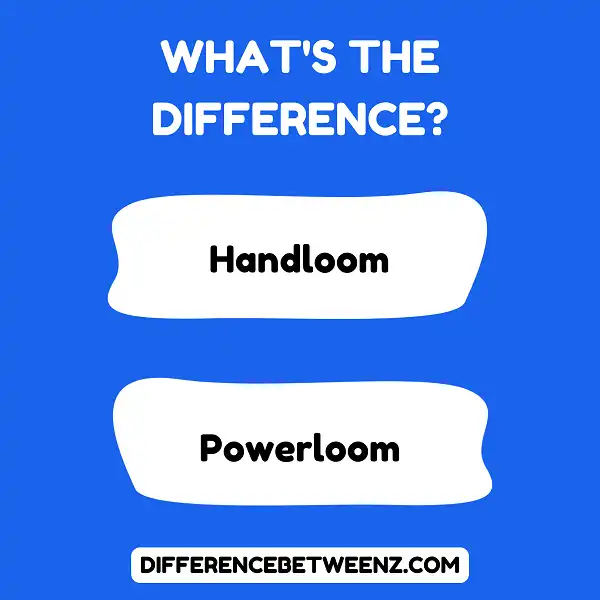Do you know the difference between handloom and powerloom? With the dawn of industrialization, many traditional techniques have taken a backseat. Traditional weaving is one such unit that has been replaced by mechanized production over time. This article will take an in-depth look at these two methods to provide you with all the information you need to identify which technique best suits your particular fabric needs.
Learn about why heritage looms like handlooms matter for sustainable fashion and about how machine-made alternatives like powerlooms produce fast fashion pieces quickly, but at what cost does this come? Read on further as we explore both types of textile manufacturing processes so that you can make an informed decision based on quality fabric production.
What is Handloom?
Handloom is a traditional method of weaving, usually using two or more sets of threads interlaced at right angles. Handlooms are used to produce clothing, including saris and other garments, as well as home furnishings like sheets and blankets.
- Handloom weaving has been in existence for centuries, across many cultures around the world. Handloom fabrics have an uneven texture compared to their machine-made counterparts, with unique imperfections that are prized by artisans and consumers alike.
- Handlooms require skill to produce and can be quite time-consuming but result in beautiful works of art that will last longer than mass-produced items.
- With the increased appreciation for eco-friendly practices over the years, handloom has seen a resurgence in popularity as people opt for slow fashion over fast fashion items.
What is Powerloom?
Powerlooms are an automated textile manufacturing machine that revolutionized the industry of weaving cloth in the early 19th century. Powerlooms allowed one person to weave a larger volume of cloth while requiring less manpower and decreasing the cost of production.
- It was invented by Edmund Cartwright in 1787 and initially used to save labor and time or clothing production — Powerlooms have since evolved to become a key component in modern textile production worldwide.
- The Powerloom is a mechanized loom that incorporates several motions such as drawing in, shedding, beating up, letting-off, and taking up into one process. Its automation means workers are no longer required to perform each step individually.
- This evolution from manual labor enabled more efficient mass production of fabrics which has real-world implications like supplying large numbers of fabric for military construction efforts during historic wars with little resources.
Powerlooms are remarkable devices that shaped the way we produce textiles today and have left a lasting impact on many aspects of culture globally.
Difference between Handloom and Powerloom
Handlooms and powerlooms are two different types of looms used in the textile industry.
- Handlooms are operated by hand, typically with a foot lever, while powerlooms use electricity to operate spinning machines consisting of metal parts.
- Handlooms take longer to weave than powerlooms, however, they are more adept at creating intricately detailed designs due to manual control over how the fabric is woven.
- Handloom fabrics generally have more texture and character compared to fabrics made on a powerloom, which can often be identified by its plainer surface pattern.
There is certainly a difference between these two types of looms and both have their place in the textile industry depending on the end result expected from the fabric.
Conclusion
In this blog post, we discussed the difference between handloom and powerloom. We also answered some common questions about these two types of looms. Powerlooms are faster and can be used to weave a variety of fabrics. Handlooms are slower but can produce finer fabrics. If you’re interested in buying a loom, consider your needs and preferences before making a decision. Thanks for reading!


